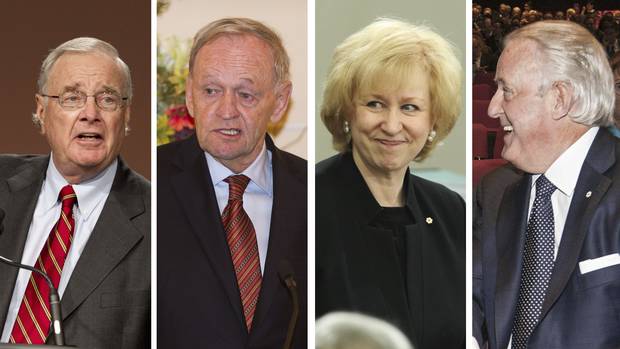Stephen Harper announced Friday that he'll be leaving Parliament to go into consulting – a path that some other former prime ministers have followed before him. But when Canada's leaders leave politics, how much did they really leave it behind? Here's what four of his predecessors did in their years after leaving the Hill.
Brian Mulroney, 1984-1993
Mr. Mulroney planned his exit from politics while he was still in office, announcing in February, 1993, that he would step down as prime minister once the Progressive Conservatives chose a successor, which he did four months later. He went back to his law career as a senior partner at Norton Rose Fulbright, where he remains today. From 1993 to 1994, he also had business dealings with German lobbyist Karlheinz Schreiber – a key figure in the Airbus affair – that were later deemed "inappropriate" by a federal inquiry in 2010. He has also served on the boards of directors of several companies, most notably Quebecor Inc., where he was appointed chairman in 2014 when controlling shareholder Pierre Karl Péladeau was considering a run for the Parti Québécois leadership.
Kim Campbell, 1993
Ms. Campbell, who served for only a few months after Mr. Mulroney's exit, has spent her post-prime-ministerial years as a diplomat, academic and international advocate for women. She served from 1996 to 2000 as Canada's consul-general in Los Angeles. She taught at Harvard from 2001 to 2004 (where she still holds an honorary position), and for the past two years she has been founding principal of a leadership college at the University of Alberta. Earlier this month, Prime Minister Justin Trudeau appointed her to chair an advisory board to recommend candidates for filling a seat on the Supreme Court of Canada.
Jean Chrétien, 1993-2003
Mr. Chrétien returned to law after his decade as prime minister, working for the Dentons firm. He has still kept an occasional hand in politics, however. In 2008, he and former NDP leader Ed Broadbent had a role in organizing a potential coalition government led by the Liberals' then-leader Stéphane Dion that would topple the then-serving Conservative government. That plan ultimately collapsed after Mr. Harper successfully sought a prorogation of Parliament. In the 2015 election, Mr. Chrétien wrote an open letter (published in several newspapers, including The Globe and Mail) that strongly criticized Mr. Harper.
Paul Martin, 2003-2006
Mr. Martin resigned as leader when his Liberals were defeated in 2006, but he served out the rest of his term as a Montreal-area MP. He introduced a bill, which died in the Senate before the 2008 election, to implement the Kelowna Accord and took part in debates about indigenous issues. Mr. Martin, who had a career in business before he entered politics, has stuck to philanthropic work in the years since he was prime minister. He founded the Martin Aboriginal Educational Initiative to try to improve educational outcomes for First Nations students and has worked on international groups, such as the Congo Basin Forest Fund.
MORE FROM THE GLOBE AND MAIL
From the archives: John Ibbitson on three things Canadians will not miss about Stephen Harper
1:31






